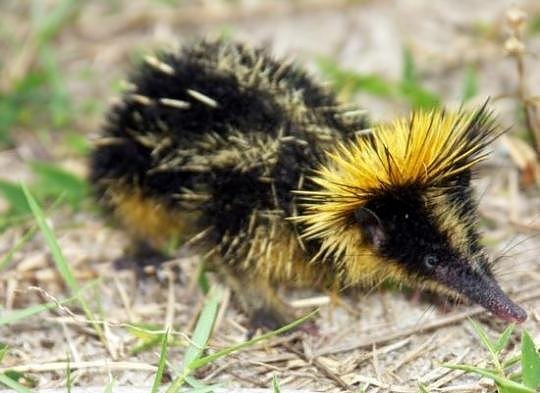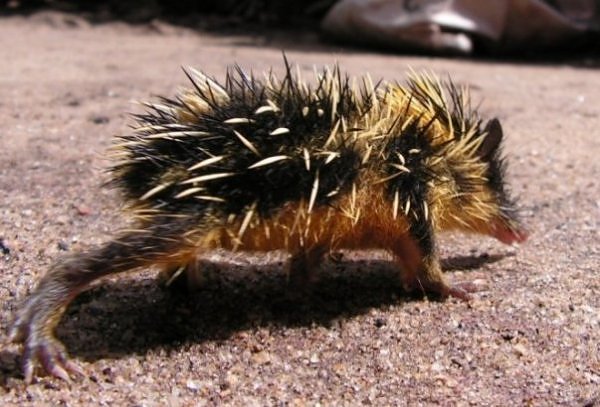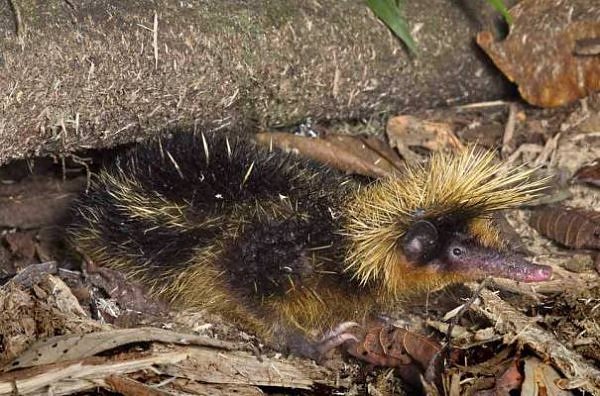
Lowland streaked tenrecs not only have a funny name, they’re also
loved by many because of their appearance, which seems to be a
cross between a hedgehog and an oversized bee. But these small
mammals have another interesting feature: apart from no tail, the
males also have no scrotum. Why? Read on to find out…
Tenrecs or more precisely Tenrecidae belong to a family of mammals
native to Madagascar and parts of Africa. The diverse members of this
species evolved in parallel with and may resemble hedgehogs,
opossums, shrews, mice or otters but are actually most closely related
to other African mammals like golden moles and sengis (elephant
shrews). Their common ancestry with animals in the Afrotheria group
like aardvarks, hyraxes (shrewmice), sea cows and even elephants
was not recognised until the 1990s.

One feature they even share with birds, reptiles and amphibians is the
common anus and urogenital tract, unusual for placental mammals.
Another fact that often amuses those studying these little critters is that
their body temperature is low enough to not require a scrotum to cool
their sperms as is common in most mammals, including the human kind.

Lowland Streaked Tenrecs (Hemicentetes semispinosus) show a distinct
two-tone colour of black with yellowish stripes said to camouflage them
while foraging for food in their tropical rainforest habitat. The stripes run
along their backs with a distinct ring of spiky yellow bristles around their
heads. The coarse fur with barbed spines reminds of that of a hedgehog
and both known Hemicentetes species have barbed detachable quills that
they use as a defense mechanism and to protect their woolly bellies.
Several of these quills rubbed produces a high-pitched sound that is
hypothesized to be a source of communication among tenrecs.

Lowland streaked tenrecs are small mammals, growing up to 20 cm
(8 in) in length and reaching a weight of 275 g (0.6 lb). They are social
animals that live in groups of 15 or more. Their diet consists mainly of
worms and grubs that they sniff out using their excellent sense of smell
and sensitive whiskers.




